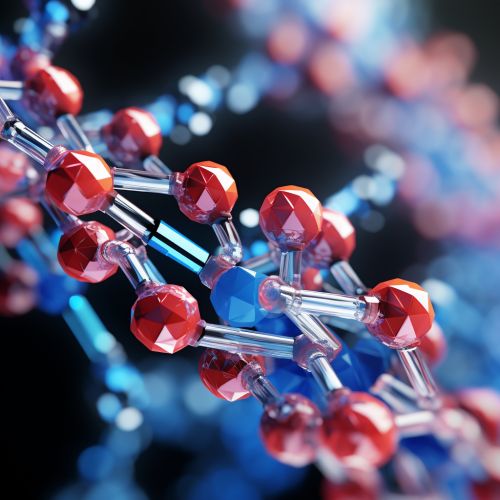Histone Acetylation
Introduction
Histone acetylation is a key epigenetic regulatory process that plays a crucial role in gene expression. This process involves the addition of an acetyl group to the histone proteins, which are responsible for the packaging of DNA into chromatin. Histone acetylation is a reversible process that is regulated by two classes of enzymes: histone acetyltransferases (HATs) and histone deacetylases (HDACs).


Histone Proteins and Chromatin Structure
Histones are highly alkaline proteins found in eukaryotic cell nuclei that package and order the DNA into structural units called nucleosomes. A nucleosome consists of a segment of DNA wound around eight histone protein cores. This structure is further compacted into higher order structures, forming chromatin. The level of chromatin compaction is regulated by various post-translational modifications, including acetylation, methylation, and phosphorylation, among others.
Histone Acetylation
Histone acetylation typically occurs at the lysine residues located in the N-terminal tail of the histone proteins. This process neutralizes the positive charge of the lysine residues, thereby reducing the interaction between the histone and the negatively charged DNA. As a result, the chromatin structure becomes less condensed, making the DNA more accessible for transcription.
Histone acetylation is a dynamic process that is controlled by the balanced action of HATs and HDACs. HATs add acetyl groups to the histone proteins, leading to a more relaxed chromatin structure and active gene transcription. On the other hand, HDACs remove these acetyl groups, leading to a more condensed chromatin structure and gene silencing.
Histone Acetyltransferases (HATs)
HATs are enzymes that catalyze the transfer of an acetyl group from acetyl-CoA to the ε-amino group of a histone lysine residue. This acetylation event neutralizes the positive charge on the histones, thereby decreasing the interaction between the histones and the DNA. HATs can be categorized into two main types: A-type HATs, which are located in the nucleus and are involved in the regulation of gene expression, and B-type HATs, which are located in the cytoplasm and are involved in the assembly of newly synthesized histones.
Histone Deacetylases (HDACs)
HDACs are a class of enzymes that remove acetyl groups from the ε-amino group of a histone lysine residue, leading to the formation of a positively charged lysine residue and restoring the interaction between the histones and the DNA. This results in a more compact chromatin structure and transcriptional repression. HDACs can be divided into four classes based on their homology to yeast proteins: Class I, II, III, and IV.
Role in Gene Expression
Histone acetylation plays a crucial role in the regulation of gene expression. Acetylation of histones leads to a more relaxed chromatin structure, allowing transcription factors and other regulatory proteins to access the DNA and initiate transcription. Conversely, deacetylation of histones leads to a more condensed chromatin structure, preventing the access of these proteins to the DNA and thereby repressing transcription.
Role in Disease
Abnormal histone acetylation patterns have been associated with various diseases, including cancer, neurological disorders, and autoimmune diseases. In cancer, for instance, aberrant histone acetylation can lead to the inappropriate activation or repression of genes involved in cell growth and survival, contributing to the development and progression of the disease.
Therapeutic Potential
Given the role of histone acetylation in disease, modulating the activity of HATs and HDACs has emerged as a promising therapeutic strategy. Several HDAC inhibitors have been developed and are currently in clinical use or undergoing clinical trials for the treatment of various types of cancer. Similarly, HAT activators are being explored as potential therapeutic agents for neurological disorders and other diseases.
